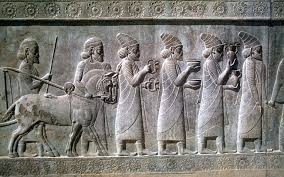Medusa’s Transformation: From Beauty to Monster
Medusa was once a stunningly beautiful woman, admired for her hair and appearance. According to Greek mythology, her life took a dramatic turn when she violated the sacred temple of Athena. Some versions say this was an act of defilement by Poseidon, and Medusa became an innocent victim of the gods’ wrath. Athena, angered by the desecration, cursed Medusa, transforming her radiant hair into a mass of venomous snakes and giving her a terrifying gaze that could turn anyone who looked at her into stone. Once a symbol of beauty, Medusa became the embodiment of fear and monstrous power.
The Encounter with Perseus
Medusa’s story is closely linked to the hero Perseus. Tasked with obtaining her head, Perseus faced a daunting challenge. With the help of divine gifts, including a reflective shield from Athena and a sword from Hermes, he approached Medusa without looking directly at her, using the shield’s reflection to navigate safely. Perseus successfully beheaded Medusa, and from her blood sprang the winged horse Pegasus and the giant Chrysaor, revealing that even in death, Medusa’s story continued to have significance in Greek mythology.
Interpretations of the Medusa Myth
Medusa’s myth has inspired many interpretations over the centuries. Some view her as a symbol of female rage and victimization, highlighting the injustice she suffered at the hands of gods and men. Others see her as a representation of danger and transformation, illustrating how power and fear are intertwined. In modern times, Medusa has also become a feminist icon, symbolizing strength, resilience, and defiance against oppression. Her story continues to captivate audiences because it explores themes of punishment, power, and survival in ways that remain relevant today.
Conclusion
The tale of Medusa is much more than a story of a monster it is a complex narrative of beauty, vengeance, heroism, and symbolism. From her tragic transformation to her confrontation with Perseus, and the many ways her story has been interpreted, Medusa remains one of Greek mythology’s most compelling and enduring figures. Her myth challenges us to consider the thin line between victimhood and power, and why some stories from ancient times continue to resonate across generations.







